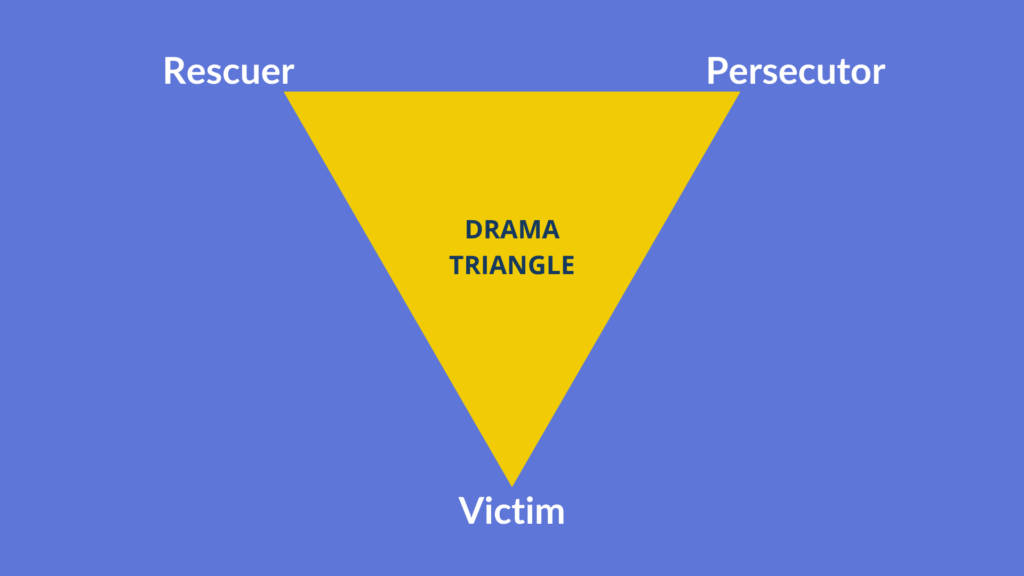Threats. Attacks. Defence. Vulnerabilities. In the constant battle against cyber criminals, it’s easy for blue teams, red teams and management teams to fall into unhelpful roles and interactions.
Stressful, emotional, high conflict situations can lead to “my team” vs. “your team” conversations and eventually compromise working relationships.
Developed by Stephen Karpman, the Drama Triangle can be used by cybersecurity teams to understand how conflict is created and how people interact. It shows the connection between personal responsibility and power in conflicts, and the dysfunctional roles people (unconsciously) play.
Karpman identified three roles: Victim, Rescuer and Persecutor.
Let’s look at them in detail:
- The Victim: The Victim’s main thought is “Why is this happening to me???” The Victim feels oppressed and powerless. Suddenly unable to make decisions, they feel ashamed and incapable of solving the problem.
- The Rescuer: The rescuer thinks: “Let me do this for you.” Hiding behind their good intentions, the rescuers feel superior. They enable the victim to feel even more powerless. They feel the need to rescue someone else so that they can escape their own problems and feel important as a result.
- The Persecutor: (a.k.a. Villain) The Persecutor believes that “It’s all your fault.” The Persecutor is controlling, blaming, critical, oppressive, angry, authoritarian, rigid, and superior. “This is not how things are done around here” is another favourite of the persecutor.
The Drama Triangle starts when a person takes on the role of a victim or persecutor. Rescuers can’t resist but show up in the situation. These roles, however, are not fixed. The victim might become the rescuer, for example, and the rescuer then switches to the persecutor if they get too frustrated.
The solution
Awareness. The roles in the Drama Triangle are unconscious. Ask yourself: which role am I playing now? Being aware of your own role is already a step further in breaking the vicious cycle.
Hack your role! Once you know which role you are playing it is easier to hack it and transform it into a positive one.
- Victim >> Creator
Instead of feeling powerless, remind yourself that you are competent, and start looking for potential solutions to the problem. Ask for help in a constructive, empowered way.
- Rescuer >> Coach
Rather than thinking you have all the answers, recognise that your need to help is not selfless. Believe that people have the skills to solve the problem, and encourage your colleagues to find their own solutions, enabling them to feel responsible and empowered.
- Persecutor >> Challenger
First, recognise that aggressive behaviour is not helpful. Be assertive instead. Express your thoughts without imposing them, listen to others and ask them how they would resolve the situation. Come to a win/win solution, while giving and receiving feedback.
Finally, create a mindset shift in your team. Lead by example (even if you are not a leader!). Use your awareness of such dynamics to stop the Drama Triangle to play. Switch roles early to defuse the situation and build trust for future interactions.
————
Do you recognise these roles in certain situations? Let me know in the comments or contact me on info@cristinamagro.com for a confidential chat on how to improve team dynamics in your organisation.

